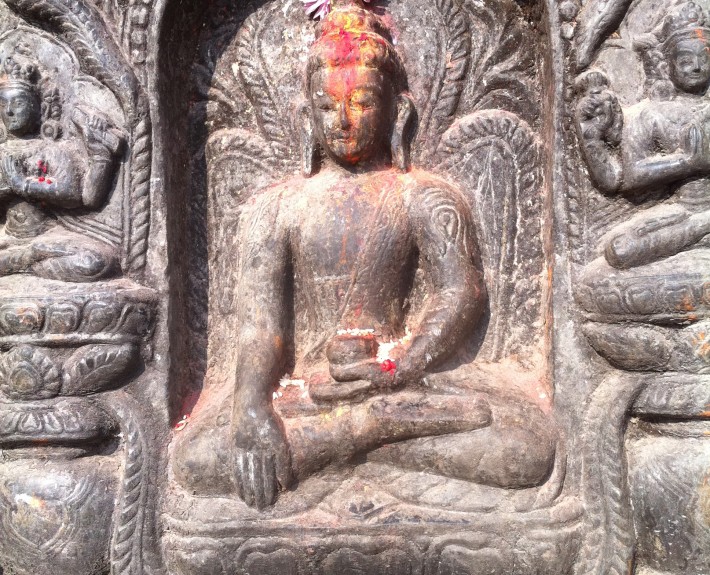The aim of Vipassana meditation is to see things as they really are
Vipassana means to see things as they really are. The word, Vipassana, in the ancient Pali language of India means “insight”. Vipassana is a way of self-transformation by using self-observation. In other words, to observe oneself and to see things as they really are within ourselves. This inward looking and honest revealing of how things truly are within: thoughts, emotions, judgments, ego-statements, behaviors, actions, etc. bring changes and liberation from suffering.
The only way to experience truth directly is to look within. We have been conditioned to look outward. We are interested in what is happening in the outside world. We look outside ourselves to blame. We look outwards to see what others are doing. With Vipassana sitting meditation we take time to look within and to examine ourselves, our own mental and physical structure, our own actions, our own reality. Through this practice of self-enquiry we become known to ourselves and we can set ourselves free from the forces within ourselves.
When we observe ourselves through Vipassana meditation we confront ourselves uncensored. We do not see ourselves through the careful constructed self-image we have in our heads. No, we see the truth and certain aspects may be hard to see and accept. But it is this unyielding search for the truth that will also liberate us and reward us with increased awareness, non-delusion, self-control and peace.
Within Buddhism, it has long been argued that the desire humans have for a continuous, unchanging self is a strong source of unhappiness. The effects of Vipassana meditation break up the illusion of a static, unchanging personality, and enable us to get in touch with the real organismic experience of endless change and perceive the temporary nature of the self.
At Hawaii Naturopathic Retreat patients are encouraged to do a sitting Vipassana meditation daily. This is indicated on the daily schedule.
In Vipassana meditation the meditator focuses on one specific thing. For example:
- Focusing on the breath, observing the breath in the present time
- Focusing on the sensations that arise within the body in the present time
- Focusing and observing the thoughts that are arising in the present time
- Focusing on observing ego statements – I AM statements (labels)- that are arising in the present time
A combination of these can be used, especially for beginners to become centered. For example, the meditator can begin the meditation session by observing the breath. Once the meditator feels the mind has become centered and quieter the meditator can choose to start focusing on thoughts that are arising in the present time. During the meditation the meditator observes the thoughts as they truly come up without censoring and without judgment.
The aim of this sitting meditation is to:
- Focus attention in the present time
- Observe and label the contents of awareness
- Train the meditator to detach and disidentify from the contents of awareness
- View the contents of awareness as an ongoing flow or process
Through this daily practice the meditator will become aware of:
- Conditioned reactions
- The prejudices that cloud our mental vision and hide reality from us
- The accumulated inner tensions that keep us agitated and miserable
Gradually the meditator learns to allow these things to dissolve and allowing the mind to become pure, peaceful and happy.
“A sensation appears, and liking or disliking begins. This fleeting moment, if we are unaware of it, is repeated and intensified into craving and aversion, becoming a strong emotion that eventually overpowers the conscious mind. We become caught up in the emotion, and all our better judgment is swept aside. The result is that we find ourselves engaged in unwholesome speech and action, harming ourselves and others. We create misery for ourselves, suffering now and in the future, because of one moment of blind reaction.
But if we are aware at the point where the process of reaction begins–that is, if we are aware of the sensation–we can choose not to allow any reaction to occur or to intensify… in those moments the mind is free. Perhaps at first these may be only a few moments in a meditation period, and the rest of the time the mind remains submerged in the old habit of reaction to sensations, the old round of craving, aversion, and misery. But with repeated practice those few brief moments will become seconds, will become minutes, until finally the old habit of reaction is broken, and the mind remains continuously at peace. This is how suffering can be stopped.“ – S.N.Goenka

